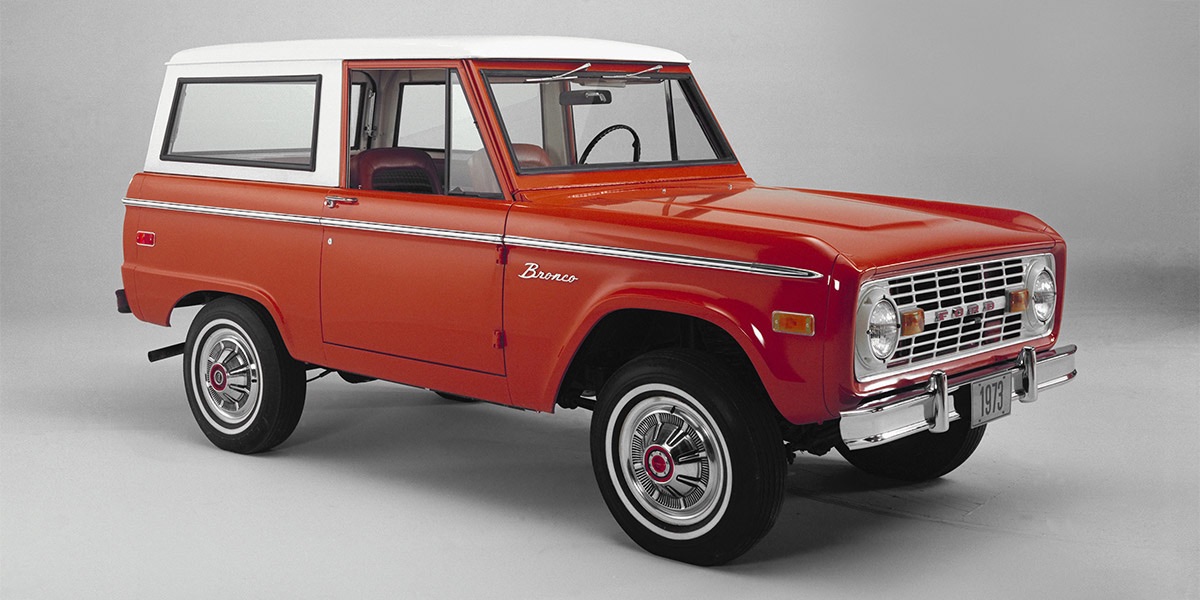The 1960s marked a period of remarkable productivity for Ford, notwithstanding the setback with the Edsel sub-brand's unsuccessful venture. Ford maintained a robust revenue stream and rolled out an array of new models during this era. While some models like the Ford Pinto fell short of expectations, others such as the iconic Ford Mustang and the adventurous Ford Bronco (interestingly, many of Ford's models were named after equines) achieved great success. The Mustang might already be familiar to you, so let's shift our focus to the Bronco.
Designed to outshine the basic Jeep, the Ford Bronco aimed to deliver enhanced comfort features—and it succeeded, to a certain degree. The Bronco boasted a more roomy interior, an advanced coil spring front suspension, and a transmission with three synchronized gears. While it wasn't quite on par with a Range Rover, it represented a significant advancement over the Jeep's offerings.
It's a misconception to think that the added comforts transformed the Bronco into an overly luxurious, impractical SUV that shied away from hard work. On the contrary, buyers had the option to equip their Bronco with a variety of functional accessories directly from the manufacturer, including a snowplow, winches, airlift springs, and auxiliary fuel tanks. Additionally, Ford distinguished itself as the sole American automaker to offer a compact SUV with a small block V8 engine—specifically, the Mustang's 289 engine, which perfectly complemented the Bronco's compact frame. Given that the oil crisis was yet to happen, this engine choice was impeccable for powering the Bronco. For those prioritizing fuel economy, a six-cylinder engine was also available. Equipped with such features, this rugged off-roader was undoubtedly equipped to embrace any adventure.
The Bronco indeed proved its mettle, participating in the inaugural NORRA Baja 1000 race, piloted by Bill Stroope. This race, a grueling 1000-mile trek across the Baja Peninsula in Mexico, presented an immense challenge. Despite Bill's confidence in the Bronco as the ideal vehicle for this task, the race highlighted the need for several modifications. To enhance its performance, the vehicle was stripped of unnecessary weight, reinforced with a roll cage, and equipped with a robust off-road suspension system. These upgrades bore fruit when Bill Stroope, alongside Parnelli Jones, steered the Bronco to victory in the Baja 1000 in both 1971 and 1972. In celebration of these triumphs, Ford released a special Baja edition of the Bronco, which has since become highly coveted by collectors.
While it may not have reached the sales heights of the Mustang, the Bronco undoubtedly achieved commercial success. From 1966 to 1977, over 230,000 units were sold. The second-generation model, built on the larger F100 chassis, became noticeably more substantial, losing some of its original allure. Today, it's the first-generation models that are most sought after by collectors.
However, there was a period, spanning from the 1980s to the 2010s, when interest in vintage Broncos waned. Recently, this trend reversed dramatically, thanks in part to a boutique Californian company, ICON 4x4, which began to restomod these classic off-roaders, reigniting global enthusiasm. This resurgence in popularity has led to the emergence of similar restoration businesses across the US. Ford even announced the revival of the Bronco nameplate for a new compact 4x4 model in 2020. While it’s exciting that the Bronco name lives on, many enthusiasts, likely including ourselves, hold a special preference for the original.
---
Embark on a journey to find your ideal vehicle by browsing through our Car Categories. Or, delve into our Classic Passion Shop for an exciting array of products from our partners, perfect for enthusiasts looking to enhance their collection!










